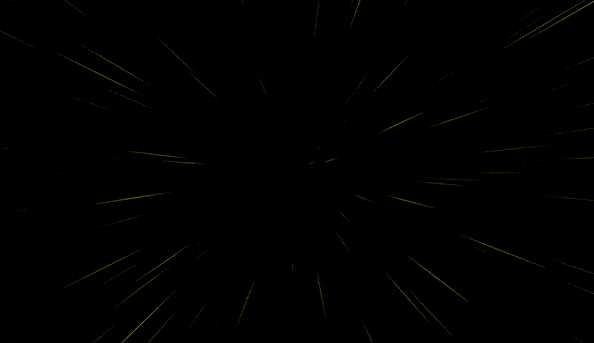Warp drive is having a moment. Scientists dropped a bombshell when they unveiled the first physical model for a warp drive, the holy grail of space travel that would allow us to bend the fabric of space and time to their will and overcome the vast distances separating humans from the stars. Another astrophysicist has now made an equally exciting discovery regarding warp drives.
Until now, the idea of traveling faster than light (FTL) has been gradually weakened by scientists relying on theories of strange physics and exotic matter. However, Erik Lentz of Göttingen University has developed a theoretical warp drive design that is based on accepted physics in a recent paper. Lentz’s theory overcomes the need for a source of exotic matter in previous designs by reimagining the shape of warped space.
We’ll bring this into perspective by bringing you up to (warp) speed. The science fiction series Star Trek is the source of the slang term “warp drive.” By crashing matter and antimatter, the Federation’s FTL warp drive transforms the explosive energy into propulsion. According to Star Trek, the ship can travel at FTL speeds just by using this incredible power.
Space is incredibly vast, which is why the idea of a warp drive is so appealing. Our nearest star system, Alpha Centauri, is more than 100,000 light years away for a modern chemically burning rocket. One way travel would take four years, even if we could travel at the speed of light, which is not possible according to conventional wisdom. We won’t likely ever reach a nearby star system without warp drive.
Our current understanding of warp speed dates back to 1994, when a now-iconic theoretical physicist named Miguel Alcubierre first proposed what we’ve called the Alcubierre drive ever since. Superluminal travel is made possible by the Alcubierre drive, which complies with general relativity as proposed by Einstein.
Motion faster than the speed of light as perceived by observers outside the disturbed region is possible, according to Alcubierre’s abstract for his paper, “by a purely local expansion of spacetime behind the spaceship and an opposite contraction in front of it.”

Essentially, an Alcubierre drive would expend a tremendous amount of energy—likely more than what’s available within the universe—to contract and twist space-time in front of it and create a bubble. There would be an inertial reference frame inside that bubble where explorers wouldn’t experience any appropriate acceleration. Within the bubble, the laws of physics would still hold true, but the ship would no longer be limited to space.
Alcubierre’s idea rests on expending stupendous amounts of energy to create a bubble of exotic matter—in this case, negative energy. The problem? Particle physics is aware of no mechanism that could produce this kind of negative energy.
This brings us to Lentz’s work, which can be found in the latest issue of the peer-reviewed journal Classical and Quantum Gravity. In it, Lentz presents a novel way to build a warp drive without the need for unidentified types of exotic matter and by employing standard physics.
After studying existing research on warp drives, Lentz realized there were specific forms of spacetime bubbles that scientists had overlooked. These bubbles resembled solitons, which are compact waves that continue to move at a constant speed and retain their whip. (Think of a single ripple steadily moving across a calm lake.) Lentz worked through various soliton configurations using Einstein’s equations, revising them until he found one that didn’t require any exotic matter and could be used with regular energy sources.

According to a statement from Lentz, “this work has moved the problem of faster-than-light travel one step away from theoretical research in fundamental physics and closer to engineering.”
“The next step is to figure out how to bring down the astronomical amount of energy needed to within the range of today’s technologies, such as a large modern nuclear fission power plant. Then we can talk about building the first prototypes.”
The enormous amount of energy needed to warp spacetime remains one of the main obstacles to FTL travel, and Lentz’s warp bubble does not solve it.
Creating a warp bubble for a 656-foot-wide spacecraft traveling at the speed of light requires roughly 100 times the energy contained in the mass of Jupiter, said Lentz. That’s about 30 orders of magnitude higher than the power of modern nuclear reactors. “Fortunately, several energy-saving mechanisms have been proposed in earlier research that can potentially lower the energy required by nearly 60 orders of magnitude,” he said.
Meanwhile, Lentz thinks it could make sense to search for positive-energy solitons’ signatures in the plasmas that surround highly magnetic neutron stars.
In related news, researchers at Applied Physics‘ Advanced Propulsion Lab (APL) have published the first-ever model of a physical warp drive in Classical and Quantum Gravity. This model, like Lentz’s research, challenges the conventional wisdom regarding warp speed travel, which holds that odd, negative forces are necessary.
Where the existing paradigm uses negative energy, the APL concept also uses floating bubbles of spacetime rather than floating ships in spacetime. Though Alcubierre himself has endorsed this model, the concept is still very much in the “far future” zone of possibility, made of ideas that scientists still don’t know how to construct in any sense. The scientists at APL write:
The method our work suggests for building such objects is based on fully understood laws of physics, even though the mass requirements required for such modifications are still enormous at this time.
Hopefully, the “far future” won’t be as far off as it seems. That may be the case if scientists continue to make breakthroughs in warp drive technology.

